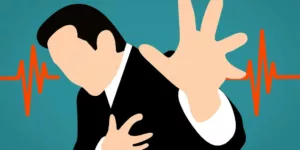If you are in Plano and have been experiencing cramping in your legs when climbing stairs, walking, or running, maybe it is time you went to see a Plano peripheral artery disease specialist for diagnosis and treatment. While PAD may disappear when you stop engaging in aggressive leg and foot functions like exercising, you can never tell when it could come back. As you plan your visit to the Prime Heart and Vascular, here is a piece of basic information about PAD you should consider.
What does having peripheral artery disease (PAD) feel like?
When you have PAD, you may experience pain in your legs when performing leg functions. The condition is known as claudication. It happens when your circulatory problem causes the arteries to become narrow, preventing adequate blood flow to the legs. So when your limbs do not get enough blood, you will feel pain or numbness when walking, lose hair on your legs, or experience slower toenail growth.
PAD can also be a symptom of fat deposit buildup in your arteries. Blood may fail to flow in your legs and limbs when this happens, leaving you weak and in pain. Once your doctor diagnoses PAD or atherosclerosis, they might advise you to exercise, quit tobacco and take a healthy diet to regain your limb functions.
Call a doctor immediately if you:
1. Are aged 65 and over with symptoms like leg pain, weakness, or weak pulse in your legs
2. Are aged over 50 and have diabetes or are a smoker
3. Below the age of 50 but have risk factors such as obesity or hypertension
PAD prevention
Your lifestyle habit can either aggravate or prevent peripheral arterial disease. To prevent it, do the following:
· Stop smoking as it affects the smooth blood flow process from the heart to your limbs.
· If you have been diagnosed with diabetes, speak with your doctor about keeping your blood sugar in check.
· Engage in physical exercises that improve your heart health. Find a simple activity like bicycle exercises or dances even if you are not physically fit to engage in any.
· Watch what you eat. Avoid foods that are rich in cholesterol levels. Instead, go for fiber-rich foods, minerals, and cholesterol-free proteins to keep your blood pressure levels in control.
· Maintain a healthy weight. If your BMI is 35 and over, that means you are obese. Speak to a dietician and health and fitness training expert to share weight loss tips.
Schedule an appointment with a heart and vascular specialist today
PAD symptoms may be similar to other conditions like osteoarthritis and leg injury. For this reason, it is easy for a primary care physician to misdiagnose PAD for either condition. When left untreated, PAD symptoms can affect the quality of your life.
Now that you already know the symptoms and prevention tips, it would also be best to work closely with your doctor to get detailed information about your case. If your doctor confirms that you have PAD, do not panic. Follow your doctor’s precautions and warnings to get your legs up and running again. To find out if you have PAD, schedule a consultation with your vascular specialist today.








